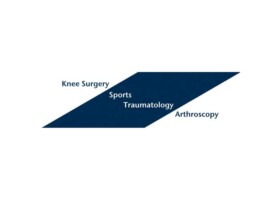The pathogenesis of rotator cuff tears (RCT) and glenohumeral osteoarthritis (OA) has many intrinsic (genetic) and extrinsic (anatomical) contributing factors, but the dis- eases are rarely seen in combination. Several extrinsic factors have been proposed in the development of RCT and OA, such as the anterior acromion morphology, the lateral acromial angle, the coracohumeral interval, the glenoid inclination, and most recently the acromion index (AI). Intrinsic factors that may lead to rota- tor cuff tears are tissue degeneration due to alterations in metabolism and oxidative stress-related change, which may play a role in the development of RCTs. Therefore, RCT may have both intrinsic and extrinsic elements. In contrast, the cause of primary glenohumeral OA is largely unknown.
Recently, the effect of lateral extension of the acromion in relation to the humeral head, de ned as the AI, has been studied in its relationship to rotator cuff disease. Some authors have found a significant association between high AI values and full-thickness RCTs, while others have found no association. Miyazaki reported that the AI has a high degree of variability and was associated with RCTs only in certain ethnic groups. Ames indicated that high AI values can affect outcomes after arthroscopic cuff repair and may lead to technical difculties during cuff repairs because of the large acromion lateral offset.
Recently, Moor introduced the concept of the critical shoulder angle (CSA), which is de ned as the angle between the plane of the glenoid fossa and the connecting line to most inferolateral point of the acromion measured on anteroposterior (AP) shoulder radiographs. The authors found that smaller CSA values were associated with OA and larger CSA values with RTCs. Based on these published heterogeneous AI studies, it seemed prudent to demonstrate the reproducibility of the CSA measurement in patients with RCTs and with OA. Furthermore, since both radiographs and MRIs are commonly used to evaluate shoulder pathology, comparing the diagnostic accuracy of the CSA when using both imaging modalities may have clinical applications. So far, no study has used MRI for measuring the CSA.
Therefore, the purpose of this study was to determine whether there is an association between the CSA and RCT as well as OA. Additionally, a secondary objective was to compare the reproducibility and accuracy of CSA values when measured on radiographs and MRIs.

Authors:
Ulrich J. Spiegl, Marilee P. Horan, Sean W. Smith, Charles P. Ho, Peter J. Millett
Abstract:
The pathogenesis of rotator cuff tears (RCT) and glenohumeral osteoarthritis (OA) has many intrinsic (genetic) and extrinsic (anatomical) contributing factors, but the dis- eases are rarely seen in combination. Several extrinsic factors have been proposed in the development of RCT and OA, such as the anterior acromion morphology, the lateral acromial angle, the coracohumeral interval, the glenoid inclination, and most recently the acromion index (AI). Intrinsic factors that may lead to rota- tor cuff tears are tissue degeneration due to alterations in metabolism and oxidative stress-related change, which may play a role in the development of RCTs. Therefore, RCT may have both intrinsic and extrinsic elements. In contrast, the cause of primary glenohumeral OA is largely unknown.
Recently, the effect of lateral extension of the acromion in relation to the humeral head, de ned as the AI, has been studied in its relationship to rotator cuff disease. Some authors have found a significant association between high AI values and full-thickness RCTs, while others have found no association. Miyazaki reported that the AI has a high degree of variability and was associated with RCTs only in certain ethnic groups. Ames indicated that high AI values can affect outcomes after arthroscopic cuff repair and may lead to technical difculties during cuff repairs because of the large acromion lateral offset.
Recently, Moor introduced the concept of the critical shoulder angle (CSA), which is de ned as the angle between the plane of the glenoid fossa and the connecting line to most inferolateral point of the acromion measured on anteroposterior (AP) shoulder radiographs. The authors found that smaller CSA values were associated with OA and larger CSA values with RTCs. Based on these published heterogeneous AI studies, it seemed prudent to demonstrate the reproducibility of the CSA measurement in patients with RCTs and with OA. Furthermore, since both radiographs and MRIs are commonly used to evaluate shoulder pathology, comparing the diagnostic accuracy of the CSA when using both imaging modalities may have clinical applications. So far, no study has used MRI for measuring the CSA.
Therefore, the purpose of this study was to determine whether there is an association between the CSA and RCT as well as OA. Additionally, a secondary objective was to compare the reproducibility and accuracy of CSA values when measured on radiographs and MRIs.
For the complete study: The critical shoulder angle is associated with rotator cuff tears and shoulder osteoarthritis and is better assessed with radiographs over MRI
